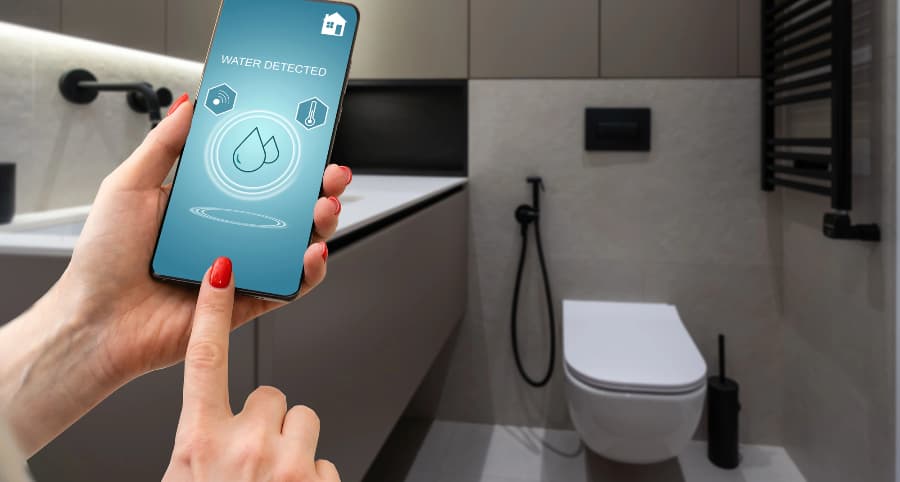How does a water sensor work and why install one with your Kingsport smart home?

One tiny leak at your house can cause major issues and thousands of dollars worth of damage. You have to protect against this risk; thankfully, there’s an easy way to accomplish this. A water sensor is a simple, effective, and budget-friendly solution. Learn how they work and why you should integrate water sensors into your Kingsport smart home.
How water sensors protect Kingsport homes
Water penetrates homes in many ways, whether from an appliance breakdown, plumbing issue, weather-related event, or simple human error. Whatever way it takes place, you need to know immediately, and this is how water sensors help. But how do they really work?
Many water sensors are conductive and operate with a pair of electrodes. When water invades the area between the electrodes, an electrical circuit is created, setting off your alarm. You’ll also find capacitive sensors that give off an electrical field. When water contacts the conductive surfaces of these devices, the field is broken, and your alarm triggers. Optical sensors utilizing infrared LED light are another choice.
Get more from your water sensor
Some innovative water sensors provide even more defense as they have incorporated temperature sensors. This is an outstanding feature in preventing pipe freezing. If there’s an extreme drop in temperature, you’ll find out right away. Taking action before pipes rupture will save you from water infiltration and exorbitant repair costs.
Why integrate water sensors into your Kingsport smart home?
When water issues happen, you must be warned immediately. You can achieve this aim by integrating water sensors into your smart home. Whether you’re on site to hear the alarm or somewhere else, you’ll receive an immediate notification on your cell phone. As an additional backup, your 24-hour monitoring agents will be alerted. Each second is critical in a water emergency to control the damage and disruption to your household.
Where should you put water sensors?
Any spot susceptible to water infiltration is an appropriate position for water sensors. Think about installing in these areas:
- Bathrooms: Position close to bathtubs or at the back of toilets.
- Basements: Water frequently seeps into lower floors via damaged walls or due to excess rain or faulty sump pumps.
- Around water heaters or appliances: Any water-utilizing appliance could leak over time.
- Below sinks: Water sensors are ideal for discovering pipe leaks in locations not easy to see.
- Attics: Identify roof leaks promptly and prevent costly damage.
Request water sensors with your Vivint smart home
Give your property the robust protection it requires with Vivint’s innovative devices. Our water sensors in Kingsport integrate with your Vivint smartphone app to provide instant updates any time your alarm goes off. You also get built-in temperature sensors to avoid pipe freezing. Learn more about the smart home tools available in Kingsport by dialing (423) 556-9460 today.